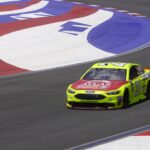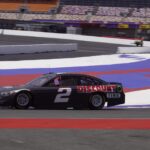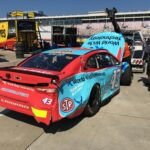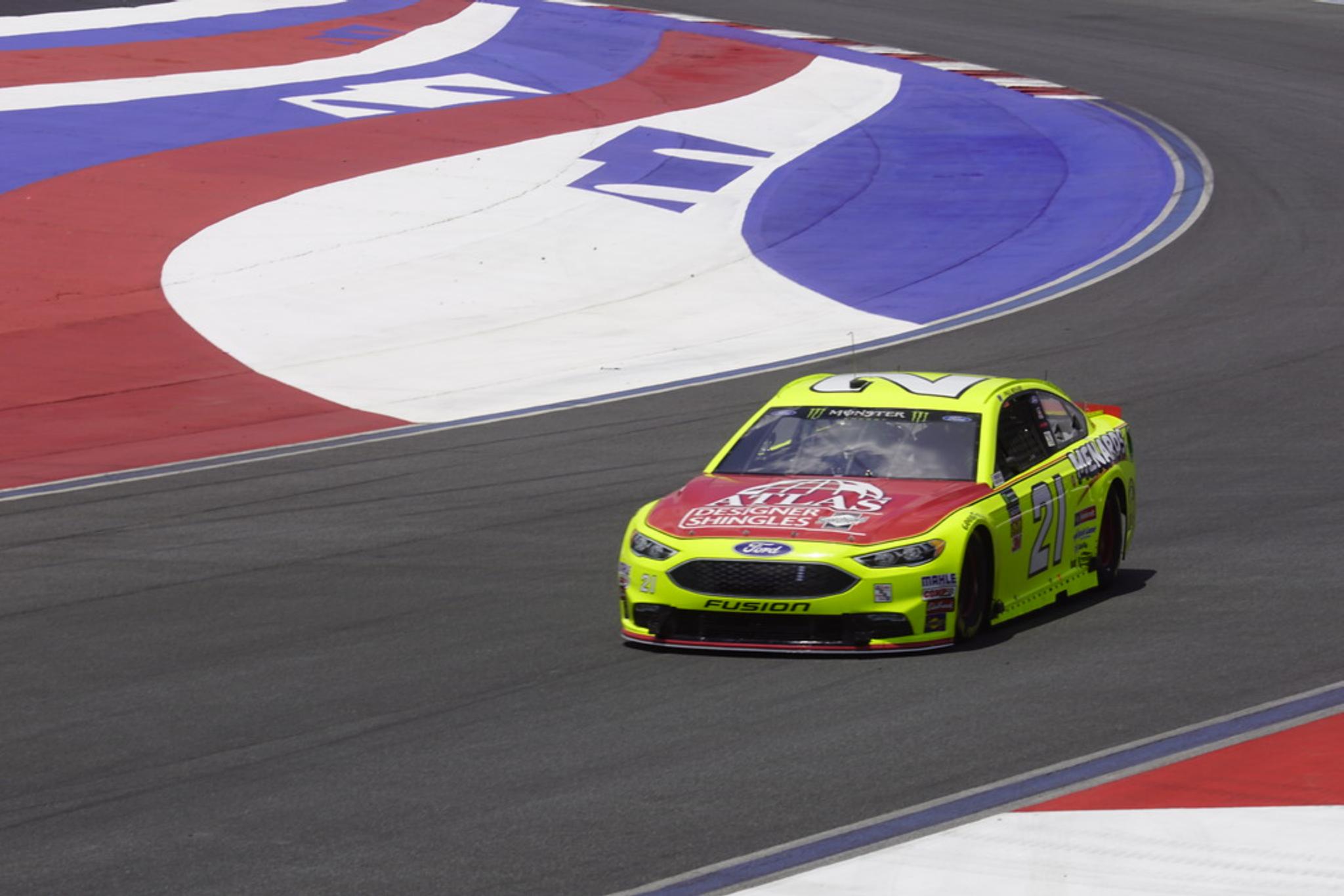Testing Prompts Changes to new Charlotte “Roval”
 |
| Paul Menard turns a lap on Charlotte's new "Roval" |
| Jon Davison/RIS |
Charlotte Motor Speedway's new oval/road course got a thorough shakedown on Tuesday as 16 Monster Energy NASCAR Cup Series teams took to the 2.28, 17-turn course in the first of two testing sessions before the new course makes its race weekend debut on Sept. 28-30 for the Bank of America ROVAL 400, but higher-than-expected testing speeds forced NASCAR and track officials to add yet another tweak to the course.
Drivers participating in Tuesday's test were among the first to experience the final iteration of the course layout, which utilizes most of the 1.5-mile oval plus a new eight-turn infield road course. Drivers enter the road course just past the entrance to pit road and exit the course back onto the oval just before the entrance to turn one.
However, even though NASCAR and track officials stressed that this layout is the "final" version, changes to the course were still being made "on the fly", as it were, based on testing in the early morning session.
Following the initial testing session back in October of last year, CMS officials changed the layout of the infield portion of the course – eliminating the final "boot", consisting of three turns and a final hairpin that led back onto the oval. Several drivers – particularly Kurt Busch – complained that the boot configuration slowed down the race speed too much.
 |
| Brad Keselowski |
| Jon Davison/RIS |
The speedway also added two chicanes to the oval portion of the course – one on the backstretch before the entrance to turn three, and a second coming off turn four. The idea was to slow the cars down enough to allow them to use rain tires in the event of bad weather during the race weekend in September.
However in Tuesday sessions, drivers were cutting through the chicane – which consisted of little more than painted lines on the asphalt and a few rumble strips – instead of driving around it, resulting in much higher-than-anticipated speeds going into turn three for the tire combination Goodyear provided.
Following a clean-up for a crash involving Darrell Wallace, NASCAR and CMS officials gathered together with several of the drivers and their crew chief to brainstorm the problem, and decided to red flag the testing session to allow time to alter the backstretch chicane by adding additional curbing and rumble strips to slow the cars.
The resulting changes were sufficient to slow down the cars, and officials from Goodyear said the initial results were promising, while drivers still say the unique layout is still a difficult to get a handle on
"There's more time to be gained coming off Oval Turn 4 onto the race track before the start-finish line. To me, that's the most challenging part of the track," said Ryan Newman. "You've got to get a good balance and you've got to be competitive at all of it and whatever makes you the nest lap time."
Among the most challenging parts of the race track are the entrance to the infield course coming off turn one and the first two turns, which feature elevation changes of up to 35 feet.
 |
| Darrell "Bubba" Wallace, Jr. tore up his No. 43 Chevrolet after sliding into a tire barrier |
| Pete McCole/AR1.com |
Darrell "Bubba" Wallace was among those who found out just how difficult getting slowed down from the racing oval to the road course entrance can be, when he slid his No. 43 Chevrolet into the tire barrier in turn one just an hour and a half into the session. Having only brought one car to the test, the team was done for the day.
At the time of his crash, Wallace was one of only a half-dozen cars on the track. A full field of 40 cars all trying to claim the same real estate going to turn one is going to be the biggest challenge, according to Jimmie Johnson.
"There are a lot of areas to make a mistake. It's going to be tough with 40 cars on the track," said Johnson. "I think survival will be the biggest hurdle to clear."
[adinserter name="GOOGLE AD"]
